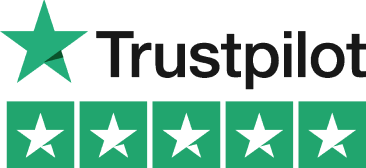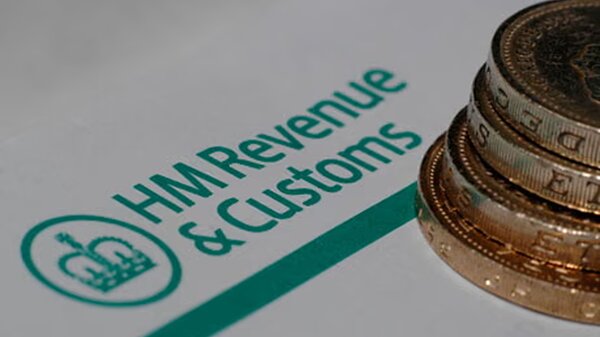Let’s break this down together…
Thinking about starting a business in the UK, or already launched one, and wondering how tax fits into the picture? You’re not alone.
From picking the right structure to meeting HMRC deadlines and claiming expenses, the tax side of things can feel overwhelming, especially when you’re trying to get your business off the ground.
But here’s the good news: it doesn’t have to be complicated.
This guide walks you through the key steps for handling your self-assessment tax return, from registering with HMRC to tracking expenses, filing your return, and avoiding penalties. Whether you’re a sole trader, freelancer, or side hustler, it’s designed to help you stay compliant, save money, and feel confident about your business finances.
At Pie tax, we help thousands of first-time filers figure out their tax position in real time. But even if you’re just here to understand the process better, you’re in the right place.
Let’s get started.
Starting Your Business Tax Journey
Let’s be honest, starting a business is thrilling until you face your first tax return. Many new business owners feel that knot in their stomach when tax season approaches.
For first time filers, the process can seem especially daunting, making it crucial to understand the steps involved and start early to avoid common errors.
But here’s the good news: self-assessment doesn’t have to be scary. With proper preparation, you can handle it confidently and efficiently.
Understanding your tax obligations early saves you from costly mistakes. It also helps you avoid those dreaded HMRC penalties that no business owner wants to face.
What Is Self-Assessment Tax and Who Needs to File?
Self-assessment is the system HMRC uses to collect income tax from people whose income isn’t automatically deducted at source.
It’s your responsibility to report what you’ve earned. As a business owner or self employed individual, you are responsible for reporting your income and must pay income tax directly, as it is not automatically deducted like in traditional employment.
As a business owner, you’ll need to register if you’re a sole trader with income over £1,000. The same applies if you’re a partner in a business partnership or a company director receiving dividends.
You must also report other income such as pensions or savings, and declare capital gains and pay capital gains tax if you have disposed of assets. Understanding your tax free allowances is important to ensure you do not pay more tax than necessary.
You can file your self assessment tax returns by submitting a paper return using a paper form, or by filing an online tax return through your HMRC online account.
Note that the deadline for a paper return is 31 October following the end of the relevant tax year, while the deadline for an online tax return is 31 January of the following year. Your tax return and payment are due for the relevant tax year.
Many first-timers don’t realise they need to register by 5 October following the end of the relevant tax year. It’s a simple online process that takes about 10 minutes to complete.
When registering, make sure your personal details are up to date in your HMRC online account to receive important correspondence about your tax returns.

Registering for Self-Assessment
Registering for self-assessment is your first official step toward managing your business taxes. If you’re self employed, receive rental income, or have any untaxed income, you’ll need to register with HMRC to file a self assessment tax return.
The process is straightforward: you’ll set up a Government Gateway account and receive a Unique Taxpayer Reference (UTR) number, which you’ll use for all your assessment tax return needs.
Registration can be completed online, by phone, or by post, but make sure you do this by 5 October following the end of the tax year in which you started your business or received untaxed income.
Registering on time ensures you can file your tax return online, access your self assessment tax account, and avoid unnecessary penalties. Once you’re set up, you’ll be able to file a self assessment, manage your income records, and stay on top of your tax obligations with confidence.
Getting Your Records Sorted
Good record-keeping isn’t just for HMRC – it’s your business lifeline. Start with a simple system that you’ll actually maintain consistently.
Keep all receipts, invoices, bank statements, and paperwork showing money movement. Be sure to include records for business expenses, home expenses, and travel expenses, as these are important for claiming allowable deductions. A basic spreadsheet works perfectly for many new business owners.
Open a separate bank account for your business transactions. This makes tracking your finances much easier when tax time arrives.
HMRC requires you to keep records for at least 5 years after the January submission deadline. Digital storage is highly recommended for this long-term requirement.
Taking 10 minutes each week to update your records will save hours of stress later. I learned this the hard way my first year, when I spent three full weekends sorting through a shoebox of receipts.
Understanding What Expenses You Can Claim
One of the biggest tax perks of running a business is claiming expenses to reduce your tax bill and lower your taxable income. The basic rule is straightforward.
If an expense is “wholly and exclusively” for business purposes, you can probably claim it. This includes office supplies, business travel, business insurance, professional memberships, and marketing costs.
If you work from home, you can claim a portion of your household bills. The simplest approach is using HMRC’s flat rate allowance – currently £6 a week.
Many new business owners miss claiming phone, internet, and professional development costs. If something is partly for business, you can claim that percentage.
You can also claim tax reliefs on certain expenses, such as charitable donations and pension contributions, provided you meet certain criteria set by HMRC. Claiming these reliefs and allowable expenses can reduce your taxable income, and if you have overpaid, you may be eligible for a tax refund.
Keep those receipts! If HMRC questions an expense, your receipt is your proof. No receipt often means no valid claim.

Calculating What You Owe
Your taxable profit is your business income minus your allowable expenses. This is what you’ll use to calculate how much tax you owe. Understanding how much tax you owe is crucial for accurate planning.
Everyone gets a Personal Allowance (currently £12,570 for 2024/25) before paying income tax. After that, rates are 20% up to £50,270, 40% up to £125,140, and 45% beyond that. The total tax owed after deductions forms your self assessment tax bill.
New business owners are often surprised by “payments on account.” These are advance payments toward your next self assessment tax bill, potentially making your first bill 150% of what you expected. Paying tax on time is essential to avoid penalties, and your tax bill must be paid by the deadline set by HMRC.
Filing Your First Return
When filing self assessment tax returns, you can choose to submit an online tax return or a paper return using a paper form. Note that the deadline for an online tax return is usually later than for a paper return, so be sure to check the specific dates for the relevant tax year.
The online self-assessment form might look intimidating at first glance. However, it’s essentially a series of questions about your income, expenses, and any other income such as pensions, savings, capital gains, or self employment income.
Capital gains and capital gains tax must also be reported if you have disposed of assets during the relevant tax year.
Take it section by section. The basic sole trader form (SA103) is straightforward for reporting self employment income if you’ve maintained good records throughout the year.
HMRC’s online system saves your progress automatically. You don’t need to complete everything in one sitting, which removes some of the pressure.
First time filers should take extra care to avoid common mistakes, such as forgetting to declare all income sources, including other income and capital gains. Another frequent error is missing out sections that seem irrelevant but may apply to your situation.
If you get stuck, HMRC’s helpline can help, though prepare for a wait. Calling earlier in the tax year generally means shorter queue times.

Managing Tax Payments and Deadlines
Mark these key dates: 31 January (submission and payment), 31 July (second payment on account), and 5 October (registration deadline). These are non-negotiable.
Set up a separate savings account for tax and save 25-30% of your profits monthly. This habit prevents the last-minute scramble for cash that many new business owners face.
HMRC accepts various payment methods including bank transfer, debit card, and Direct Debit. Online banking typically provides the quickest processing.
If you’re struggling to pay, contact HMRC before the deadline arrives. You can request a payment plan to spread your tax bill over weekly, monthly, or quarterly installments, helping you manage your debt and avoid penalties.
Late filing penalties start at £100 and increase over time. Late payments also result in additional interest charges and penalties, with interest currently at relatively high rates.
What if You Make a Mistake?
Mistakes happen, especially when you’re filing your first self assessment tax return. If you spot an error on your tax return, whether it’s a missed income entry or an incorrect expense, don’t panic.
You can amend your assessment tax return online or by submitting a paper correction, as long as you do so within 12 months of the original filing deadline.
Keeping detailed records of your income and expenses throughout the year will make it much easier to identify and fix any mistakes. If you’re unsure how to correct an error, HMRC offers guidance and support to help you get it right.
Remember, errors left uncorrected can lead to penalties and interest, so it’s always best to review your self assessment tax return carefully and act quickly if you need to make changes.

Common Tax Mistakes to Avoid
Filing your self assessment tax return for the first time can be daunting, and it’s easy to make mistakes. Some of the most common errors include forgetting to declare all sources of income, claiming expenses that aren’t allowable, and missing the filing deadline.
To avoid these pitfalls, keep thorough records of your income and allowable expenses, and always keep receipts and invoices as proof. Double-check your assessment tax return before submitting to ensure all figures are accurate and complete.
Filing your self assessment tax return on time is crucial, as late submissions can result in penalties and interest charges. By staying organised and informed, you can avoid these common mistakes and ensure your tax return is both accurate and compliant.
Final Thoughts
Your first self-assessment return is like your first driving lesson – nerve-wracking until you've done it, then surprisingly manageable.
Start early, keep simple records, and understand what expenses you can claim. These three habits make tax time significantly easier.
Remember that becoming tax-confident is part of your business growth journey. Each year gets easier as you become familiar with the process.
Pie tax: Simplifying Self-Assessment Tax for First-Time Business Owners
Your first tax return shouldn't keep you up at night when you could be focusing on growing your business. We've designed our solution with your peace of mind as the priority.
Pie tax, the UK's first personal tax app, shows your tax position in real-time. You'll always know where you stand financially throughout the year, not just at tax time.
Our app connects to your bank accounts and automatically categorises expenses. This turns months of paperwork into minutes of checking and confirmation.
We've built our dashboard specifically for people juggling multiple income streams. Whether you're combining employment with a side hustle or managing several ventures, we've got you covered.
Curious to see how it works? Explore the Pie tax app to discover how we're making tax simpler for thousands of UK business owners just like you.










